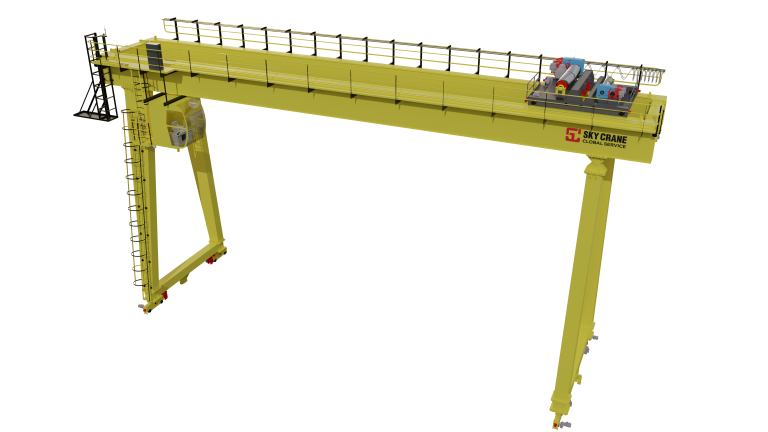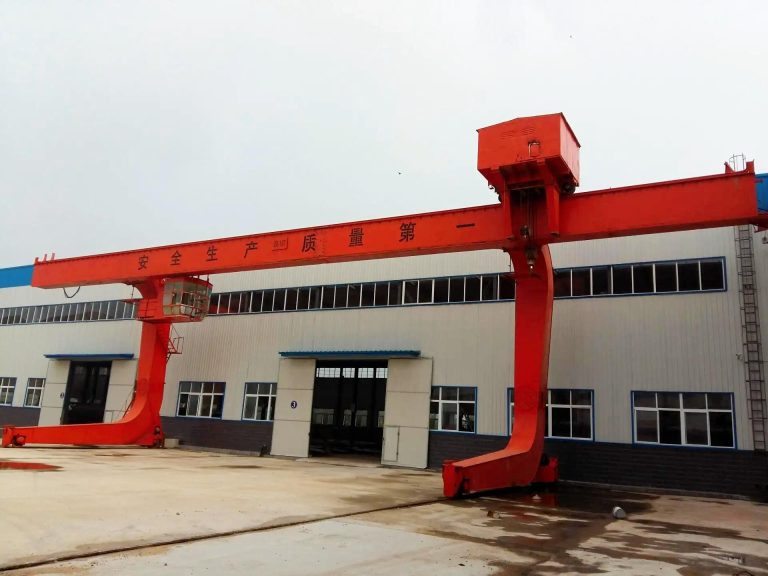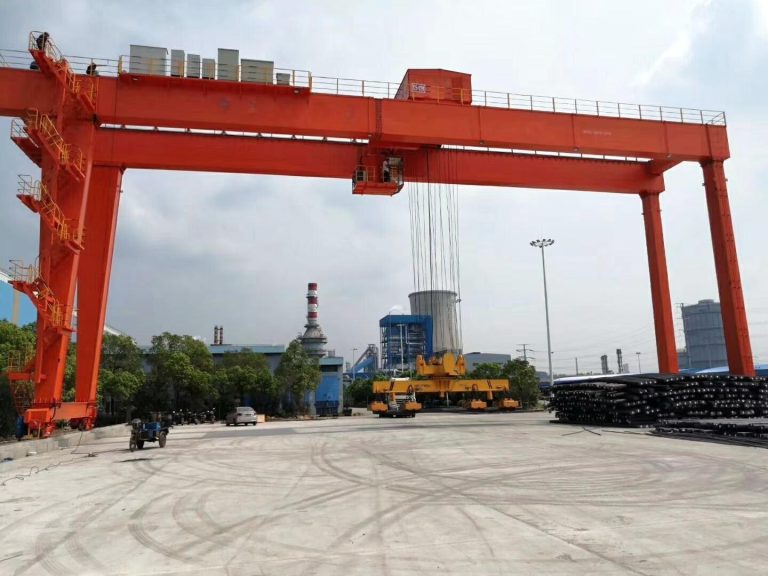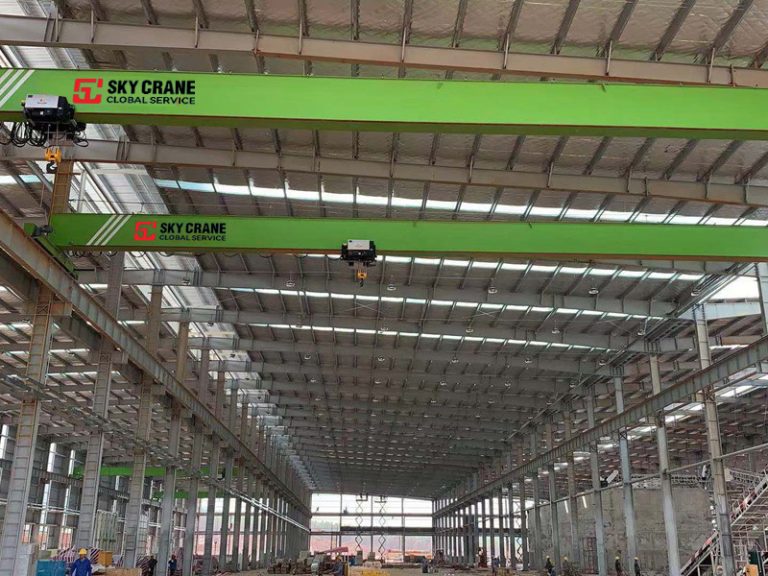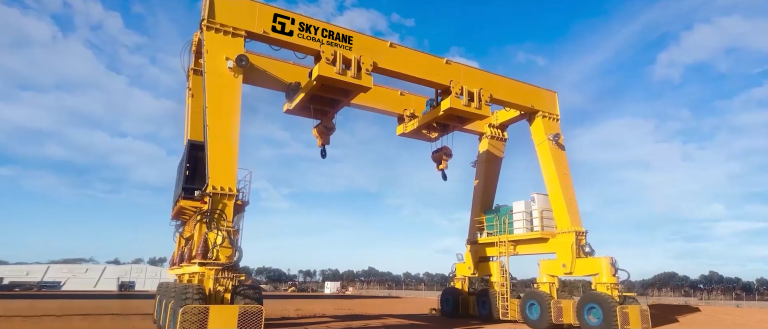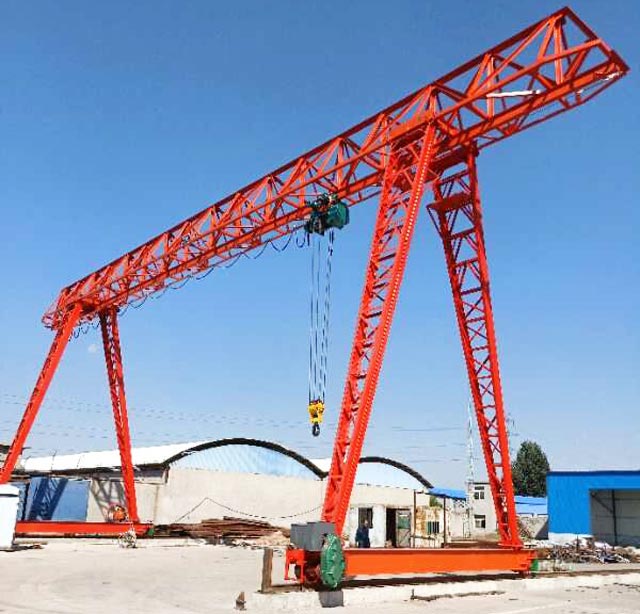Table of Contents
गोदाम सञ्चालनमा उच्च-गुणस्तर लिफ्टिङ उपकरण प्रयोग गर्ने फाइदाहरू
गोदाम सञ्चालनको द्रुत-गतिको संसारमा, दक्षता र सुरक्षा सर्वोपरि छन्। यी दुवै लक्ष्यहरू प्राप्त गर्ने एउटा तरिका भनेको उच्च गुणस्तरको लिफ्टिङ उपकरणमा लगानी गर्नु हो। चाहे तपाईं सानो व्यवसाय होस् वा ठूलो निगम, कामको लागि सही उपकरणहरू भएकोले तपाईंको तल्लो रेखामा महत्त्वपूर्ण भिन्नता ल्याउन सक्छ। यस लेखमा, हामी गोदाम सञ्चालनहरूमा उच्च-गुणस्तर लिफ्टिङ उपकरणहरू प्रयोग गर्ने फाइदाहरू अन्वेषण गर्नेछौं।
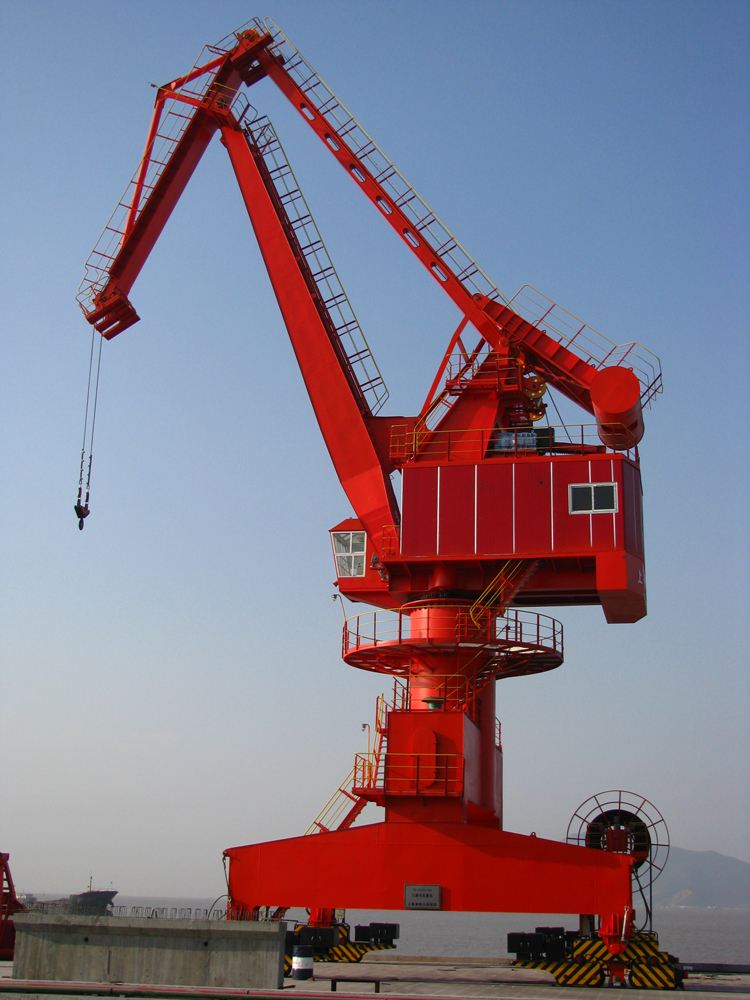
तपाइँको गोदाम निर्यात व्यवसायको लागि दायाँ लिफ्टिङ उपकरण कसरी छनौट गर्ने
सिरियल नम्बर
उत्पादन
| LD इलेक्ट्रिक एकल बीम क्रेन | विश्वव्यापी गैन्ट्री क्रेन |
| 1 | युरोपेली शैली क्रेन |
| 2 | हार्बर क्रेन |
| 3 | एक गोदाम सेटिङमा सञ्चालन लिफ्टिङ उपकरणको लागि शीर्ष सुरक्षा सुझावहरू |
| 4 | भारी सामान र सामग्रीको कुशल आन्दोलनको लागि अनुमति दिँदै, गोदाम सञ्चालनमा लिफ्टिङ उपकरणले महत्त्वपूर्ण भूमिका खेल्छ। यद्यपि, यो उपकरण सञ्चालन गर्दा यसको आफ्नै जोखिम र चुनौतीहरू छन्। कामदारहरूको सुरक्षा सुनिश्चित गर्न र गोदामको सहज कार्यप्रणाली सुनिश्चित गर्न, लिफ्टिङ उपकरणहरू प्रयोग गर्दा उचित सुरक्षा प्रोटोकलहरू पालना गर्न आवश्यक छ। उचित रूपमा प्रशिक्षित र प्रमाणित छन्। अपरेटिङ लिफ्टिङ उपकरणलाई विशेष सीप र ज्ञान चाहिन्छ, र प्रशिक्षित व्यक्तिहरूलाई मात्र यो मेसिनरी सञ्चालन गर्न अनुमति दिइन्छ। तालिमले उपकरणहरू कसरी सञ्चालन गर्ने भनेर मात्र नभई सम्भावित खतराहरू कसरी पहिचान गर्ने र आपतकालिन अवस्थामा कसरी प्रतिक्रिया दिने भन्ने कुरालाई पनि समेट्नुपर्दछ। राम्रो कामको अवस्थामा। नियमित निरीक्षणहरूले कुनै पनि सम्भावित समस्याहरूलाई गम्भीर समस्याहरू बन्नु अघि पहिचान गर्न मद्दत गर्न सक्छ, दुर्घटना र चोटपटकको जोखिम कम गर्न। मर्मत सम्भार निर्माताको दिशानिर्देशहरू अनुसार गरिनु पर्छ, र कुनै पनि दोषपूर्ण उपकरण तुरुन्तै सेवाबाट हटाइनुपर्छ। यसमा तौलको सीमा पालन गर्ने, स्तरको मैदानमा उपकरण प्रयोग गर्ने, र अचानक चाल वा झटका चालहरू बेवास्ता गर्ने समावेश छ। यी दिशानिर्देशहरू पालना गर्न असफल हुँदा दुर्घटनाहरू र चोटपटकहरू हुन सक्छ, त्यसैले यो सधैं सुरक्षित र नियन्त्रित रूपमा लिफ्टिङ उपकरणहरू सञ्चालन गर्न महत्त्वपूर्ण छ। अवरोध र अन्य खतराहरू। उपकरण प्रयोग गर्नु अघि, अपरेटरहरूले वरपरको क्षेत्रको निरीक्षण गर्नुपर्छ र मेसिनरी सञ्चालनमा हस्तक्षेप गर्न सक्ने सम्भावित अवरोधहरू हटाउनु पर्छ। यसमा उपकरणहरू सुरक्षित रूपमा चलाउन पर्याप्त ठाउँ छ र त्यहाँ कुनै ओभरहेड अवरोधहरू छैनन् जसले जोखिम खडा गर्न सक्छ भन्ने सुनिश्चित गर्ने समावेश गर्दछ। यसमा सही एट्याचमेन्ट र सामानहरू प्रयोग गर्ने, लोडलाई ठीकसँग सुरक्षित गर्ने, र गुरुत्वाकर्षणको स्थिर केन्द्र कायम राख्ने समावेश छ। अनुचित लिफ्टिङ प्रविधिले दुर्घटना र चोटपटक निम्त्याउन सक्छ, त्यसैले लिफ्टिङ उपकरणहरू प्रयोग गर्दा सधैं उत्तम अभ्यासहरू पालना गर्नु आवश्यक छ। यसमा कडा टोपीहरू, सुरक्षा चश्माहरू, पन्जाहरू, र स्टिल-टुएड बुटहरू जस्ता वस्तुहरू समावेश छन्। व्यक्तिगत सुरक्षात्मक उपकरणले कामदारहरूलाई सम्भावित खतराहरूबाट जोगाउन र दुर्घटनाको घटनामा चोटपटकको जोखिम कम गर्न मद्दत गर्न सक्छ। अपरेटरहरू ठीकसँग प्रशिक्षित छन् भनेर सुनिश्चित गरेर, नियमित रूपमा उपकरणहरूको निरीक्षण र मर्मत, निर्माताको दिशानिर्देशहरू पालना गर्दै, क्षेत्रलाई अवरोधहरूबाट खाली राखेर, उचित लिफ्टिङ प्रविधिहरू प्रयोग गरेर, र उपयुक्त व्यक्तिगत सुरक्षा उपकरणहरू लगाएर, दुर्घटना र चोटपटकको जोखिमलाई कम गर्न सकिन्छ। सुरक्षालाई प्राथमिकता दिएर, गोदाम सञ्चालकहरूले सबै कर्मचारीहरूको लागि सुरक्षित र कुशल काम गर्ने वातावरण सिर्जना गर्न सक्छन्। |
Cost is also an important consideration when choosing lifting equipment for your warehouse export business. While it may be tempting to opt for the cheapest option, it is important to consider the long-term costs of maintenance and repairs. Investing in high-quality equipment may cost more upfront, but it can save you money in the long run by reducing downtime and the risk of accidents.
In conclusion, choosing the right lifting equipment for your warehouse export business is a crucial decision that can impact the efficiency and safety of your operations. Consider factors such as weight capacity, type of equipment, warehouse layout, safety, and cost when making your decision. By taking the time to carefully assess your needs and choose the right equipment, you can ensure that your warehouse export business runs smoothly and successfully.
Top Safety Tips for Operating Lifting Equipment in a Warehouse Setting
Lifting equipment plays a crucial role in warehouse operations, allowing for the efficient movement of heavy goods and materials. However, operating this equipment comes with its own set of risks and challenges. To ensure the safety of workers and the smooth functioning of the warehouse, it is essential to follow proper safety protocols when using lifting equipment.
One of the most important safety tips for operating lifting equipment in a warehouse setting is to ensure that all operators are properly trained and certified. Operating lifting equipment requires specialized skills and knowledge, and only trained individuals should be allowed to operate this machinery. Training should cover not only how to operate the equipment but also how to identify potential hazards and how to respond in case of an emergency.
In addition to proper training, it is essential to regularly inspect and maintain lifting equipment to ensure that it is in good working condition. Regular inspections can help identify any potential issues before they become serious problems, reducing the risk of accidents and injuries. Maintenance should be carried out according to the manufacturer’s guidelines, and any faulty equipment should be taken out of service immediately.
When operating lifting equipment, it is important to always follow the manufacturer’s instructions and guidelines. This includes adhering to weight limits, using the equipment on level ground, and avoiding sudden movements or jerky motions. Failure to follow these guidelines can result in accidents and injuries, so it is crucial to always operate lifting equipment in a safe and controlled manner.
Another important safety tip for operating lifting equipment in a warehouse setting is to ensure that the area is clear of obstacles and other hazards. Before using the equipment, operators should inspect the surrounding area and remove any potential obstructions that could interfere with the operation of the machinery. This includes ensuring that there is enough space to maneuver the equipment safely and that there are no overhead obstacles that could pose a risk.
It is also important to use proper lifting techniques when operating lifting equipment in a warehouse setting. This includes using the correct attachments and accessories, securing the load properly, and maintaining a stable center of gravity. Improper lifting techniques can result in accidents and injuries, so it is essential to always follow best practices when using lifting equipment.
Finally, it is crucial to always wear the appropriate personal protective equipment when operating lifting equipment in a warehouse setting. This includes items such as hard hats, safety goggles, gloves, and steel-toed boots. Personal protective equipment can help protect workers from potential hazards and reduce the risk of injuries in the event of an accident.
In conclusion, operating lifting equipment in a warehouse setting requires careful attention to safety protocols and best practices. By ensuring that operators are properly trained, regularly inspecting and maintaining equipment, following manufacturer’s guidelines, keeping the area clear of obstacles, using proper lifting techniques, and wearing the appropriate personal protective equipment, the risk of accidents and injuries can be minimized. By prioritizing safety, warehouse operators can create a safe and efficient working environment for all employees.

